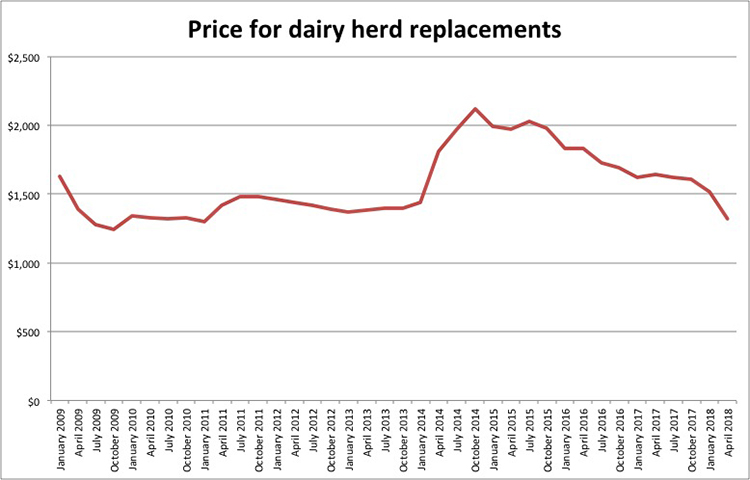
$1,320.
That’s the price quoted for dairy herd replacements by USDA in its April 2018 Agricultural Prices. The figure was down $160 from this past January . . . off $280 since last April.
There are three principle reasons for the downturn:
1. Low milk prices
2. Strong heifer inventories
3. A long winter
Low milk prices: The last time dairy replacement prices fell this low was from 2009 to 2011. Of course, 2009 was the year dairy farmers received a disastrous $12.82 mailbox price. Mailbox milk prices eventually climbed to $20.20 by 2011, but replacement values were much slower to recover. From April 2009 to January 2011, replacements ranged from $1,240 to $1,390 per head.
This time around, milk prices are not as low as 2009, but they have been in the doldrums for a longer time span. As this has occurred, the Milk-Feed-Price Ratio fell to a paltry 1-to-97. That low number indicates what everyone on the farm already knows — it’s darn tough to eke out a profit, diminishing the economic desire to buy more heifers.
Strong heifer inventories: As farm gate milk prices remain below the cost of production for the vast majority of U.S. dairy farmers, dairy replacements waiting to join the milking herd hover at historic highs. In January, there were 51 heifers for every 100 milk cows. That’s based on this year’s replacement heifer population of 4.78 million and a dairy cow herd of 9.4 million.
As a comparison, 10 years ago there were 47 heifers for every 100 milk cows.
A long winter: Whether you live in the U.S. or Canada, winter has been persistent. While there are some interested buyers, heavy snow and wet conditions have reduced the desire to move cattle. There have been reports recently that buyers are starting to look.
When did heifer prices peak? That took place in October 2014 when heifers fetched $2,120 per head. Since then, values have slowly fallen by $780 to this April’s $1,320.





